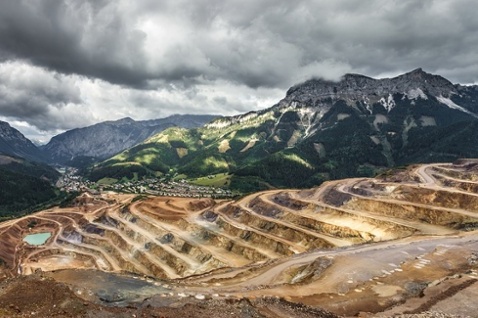Extracting the valuable metals we use everyday is a challenge, one being met by age-old mining techniques as well as new, innovative practices.
Have you ever looked down at your laptop or sat in your car and wondered where the materials composing these devices came from? Once they’re extracted from the ground, how are rocks and dirt transformed into workable substances? What resources went into the production of the gadgets we use every day? The answer for many of the metals, of course, is mining, but there are a variety of ways they move from the Earth into our smartphones.
Digging
Unfortunately for us, as the Environmental Literacy Council explains, useful minerals — from iron to gold and even the rare earth metals — rarely show up in unadulterated, large quantities that can be simply plucked from the ground and used to manufacture ovens or headphones. Instead, they generally exist as ores, or mixed collections of minerals found in rocks — and when they’re concentrated enough, it becomes economically viable to extract the metals. Before that can happen, however, the ores must be excavated from the ground.
Typically, this is done through two basic techniques: sub-surface (underground) and surface mining. Surface mining is both the less expensive of the two and the go-to method when the desired minerals are located near the surface of the Earth. Whether it’s with the aid of explosives or heavy excavation equipment, the topsoil is removed to reach the buried treasures, most commonly in the form of open-pit and strip mines, mountaintop removal, and quarrying, according to GreatMining.
And More Digging

If the minerals are located too deep within the Earth, underground mining can be employed. Subsurface methods vary depending on the type of mineral and whether they’re soft, like coal, or hard rock, like those that usually contain copper and lead (e.g. hard metals). Regardless, almost all underground mines share critical features — including extensive ventilation systems to clear the fumes from blasting and drilling, access and transport shafts, and escape routes, to name a few.
Every mine is site-specific, however, with unique conditions requiring unique considerations. Over the years, improved techniques have steered operators away from simple blast mining to safer and more reliable methods, such as longwall mining, as How Stuff Works explains. Here, rather than drilling through an ore deposit, a longwall machine slices off giant slabs of the material, which fall directly onto a continuously moving conveyor belt to a processing machine.
This method is substantially more efficient than the commonly used room and pillar tactic (in which mined material is extracted across a horizontal plane), recovering up to 90 percent of the available ores. By contrast, room and pillar mining typically recovers 50 percent.
Processing
Once the ores have been excavated, the metals themselves must then be extracted from the ore, a process that depends on the metals’ reactivity, according to BBC. Highly reactive metals such as aluminum, for example, can be isolated using an electric current in a technique known as electrolysis. Less reactive metals like iron can be extracted with reduction, where oxygen is removed from the ore through a reaction with carbon or carbon dioxide.
Many rare earth elements, on the other hand, mostly undergo complex chemical processing to be separated from the ore minerals, and this is in part what makes them so expensive to mine, according to Anzaplan. Once separated, the metals are used to build and improve our modern world. Digging is an inherently dusty process, so it’s no surprise that mining kicks up a lot of dust. Both underground and surface mining face their own dust-related challenges, and Midwest Industrial Supply, Inc. has the solutions.
Haul and access roads, whether above or below ground, can be dramatically improved with Midwest’s Synthetic Organic Dust Control® system, which reduces lifecycle costs and improves road strength. So the next time you wonder where all that metal came from, remember that Midwest keeps the particulate matter down and the diggers digging.


